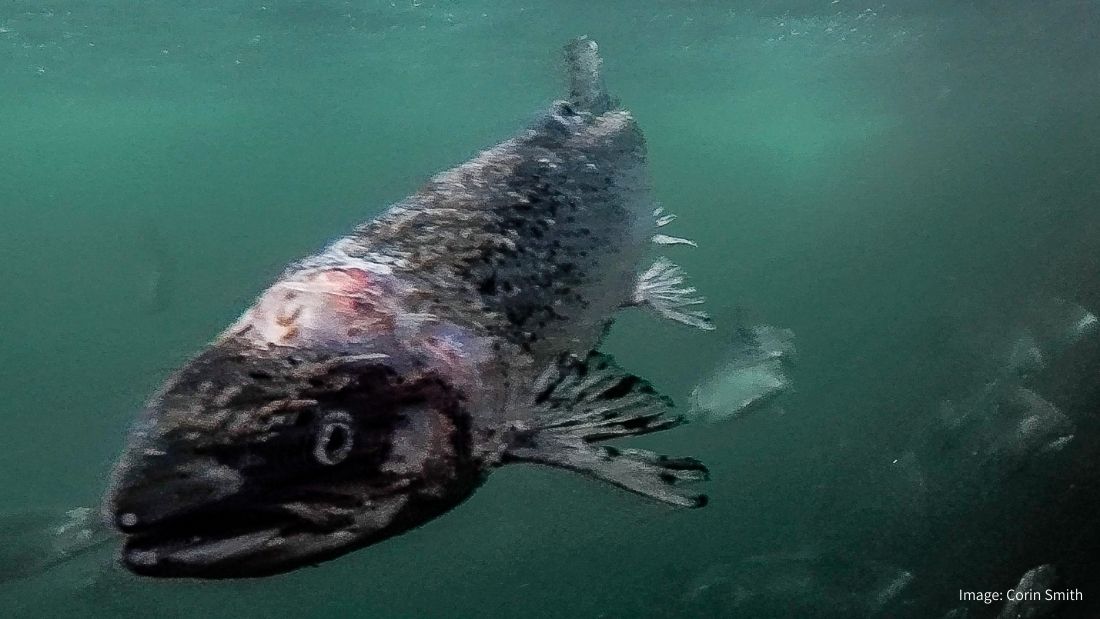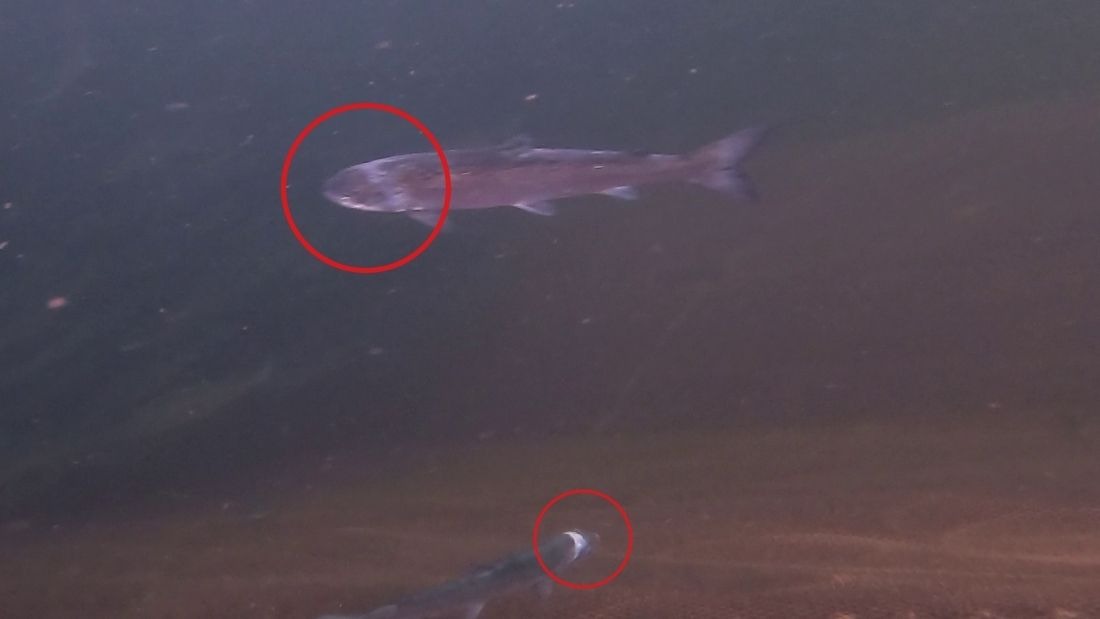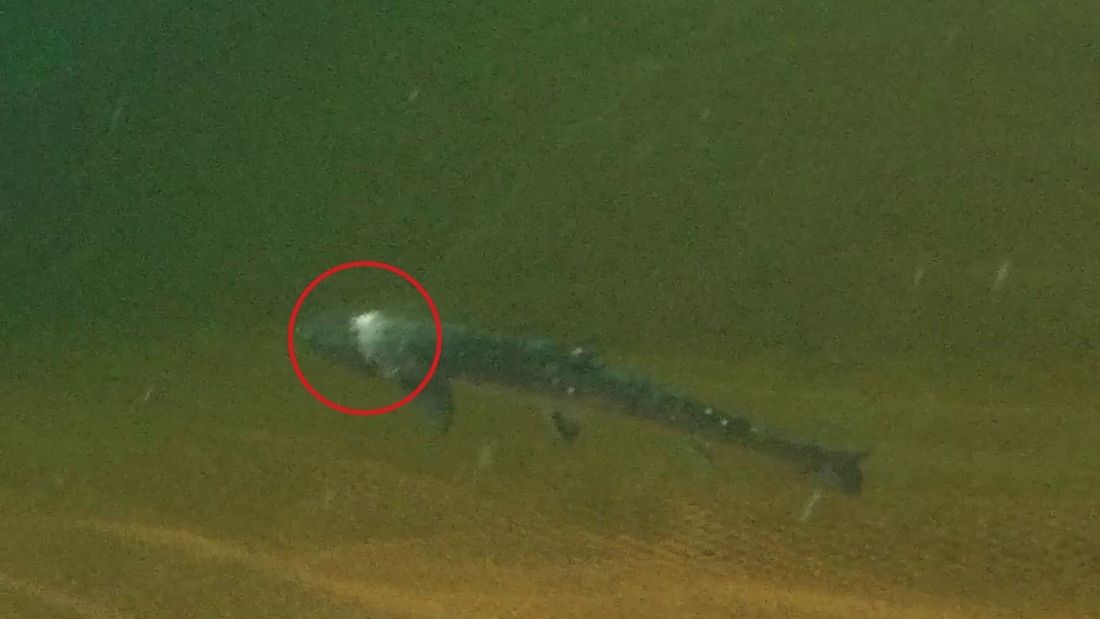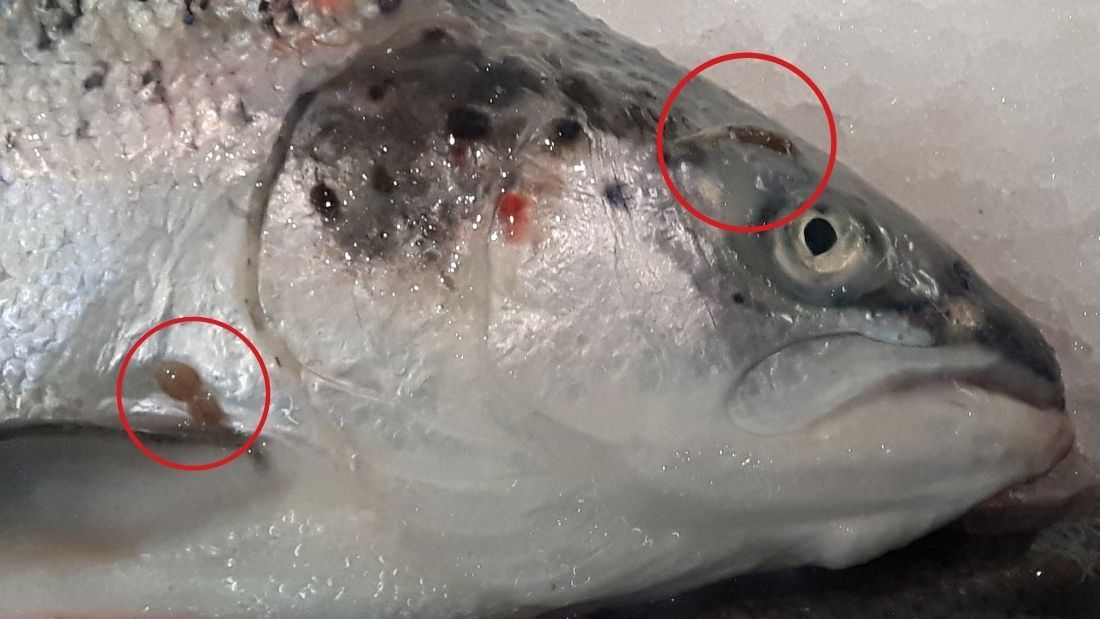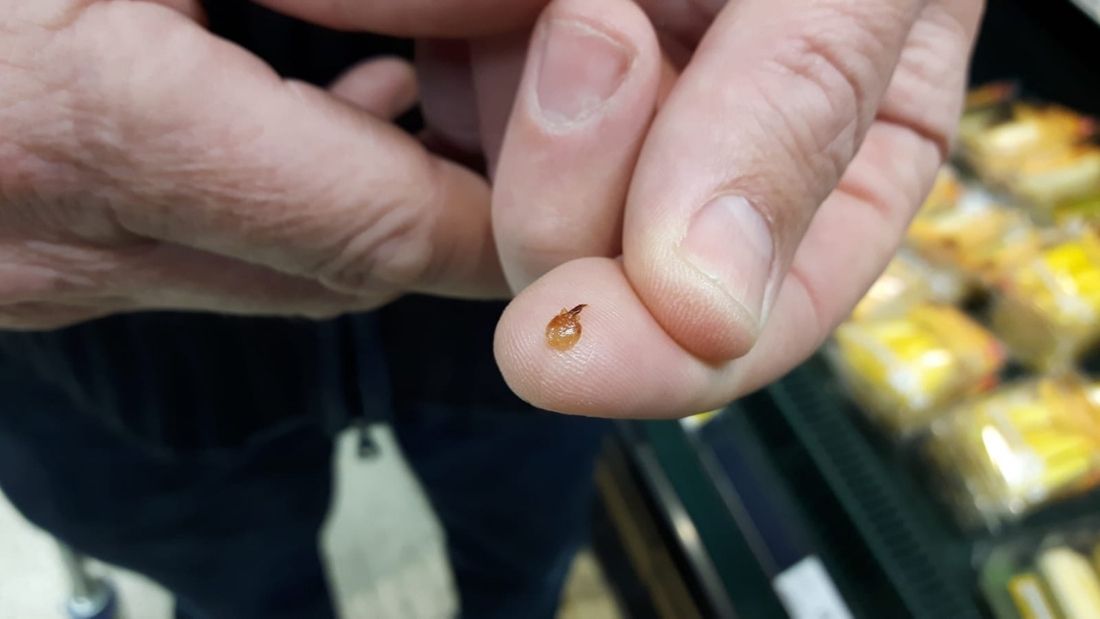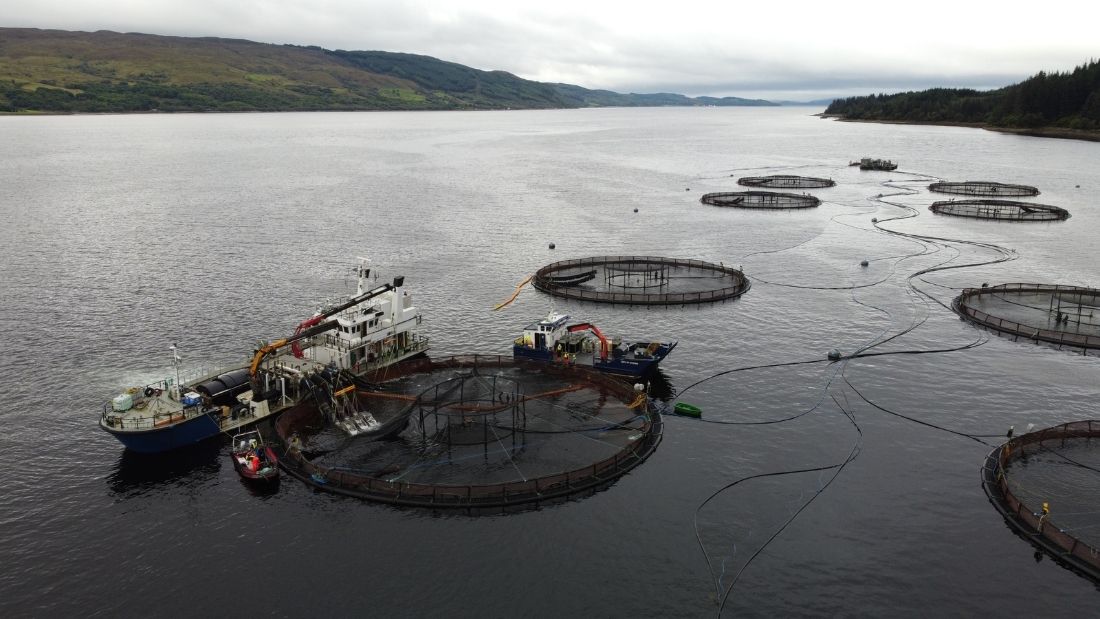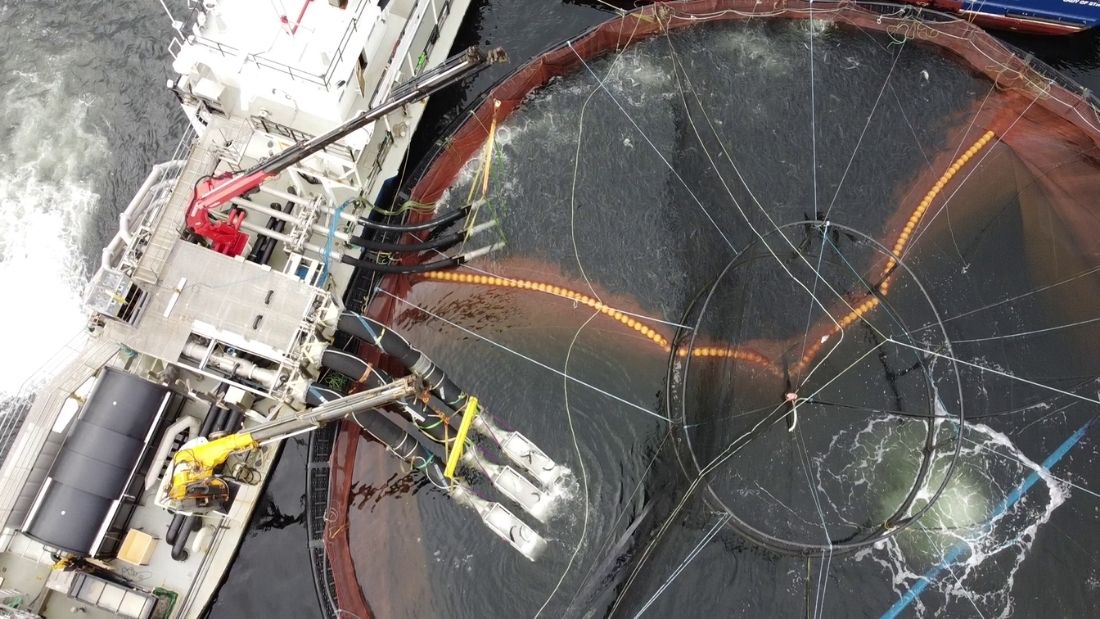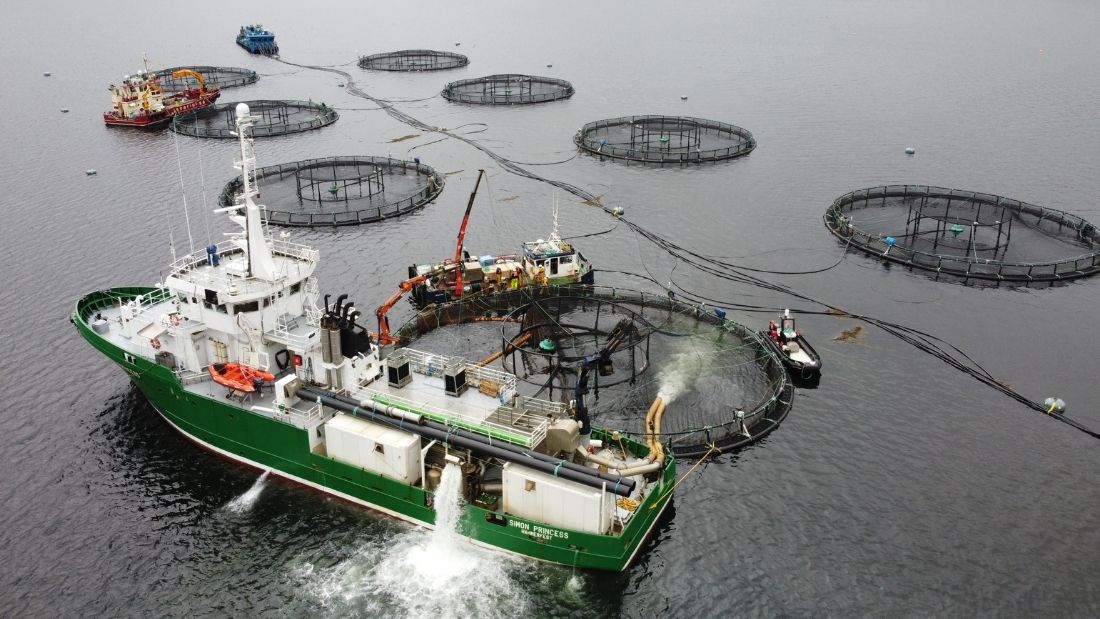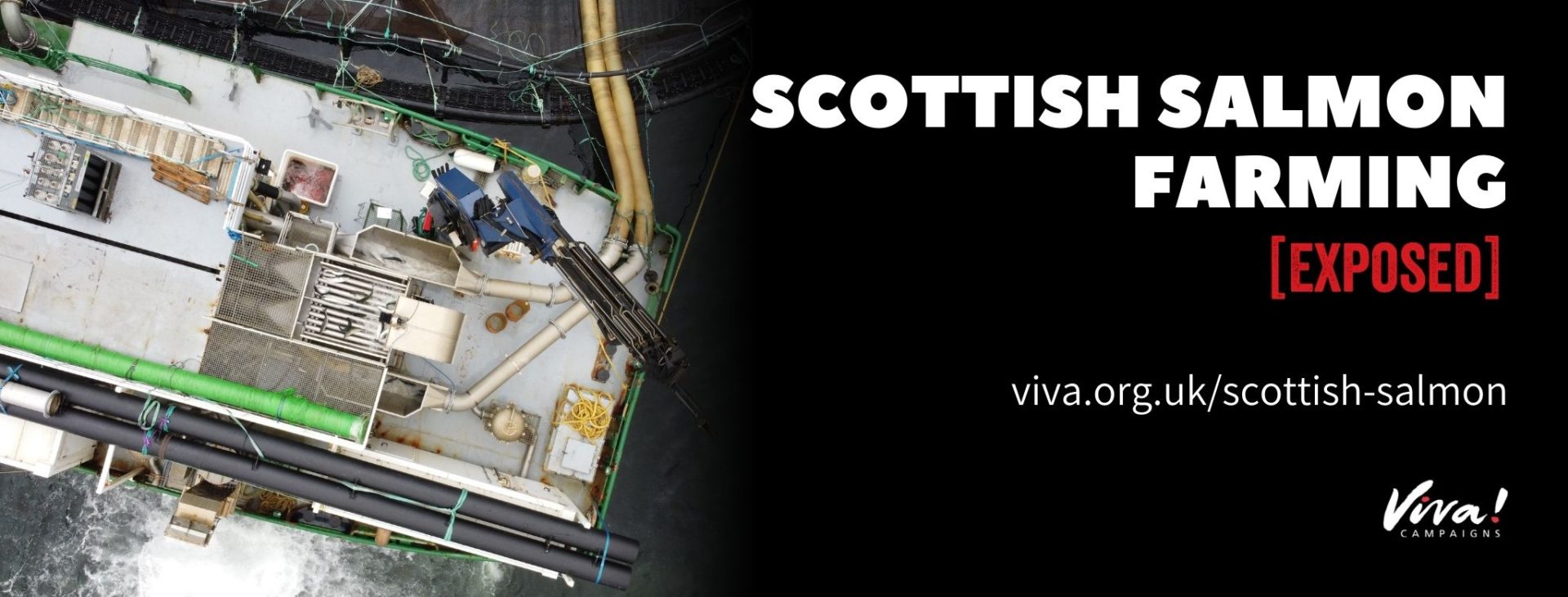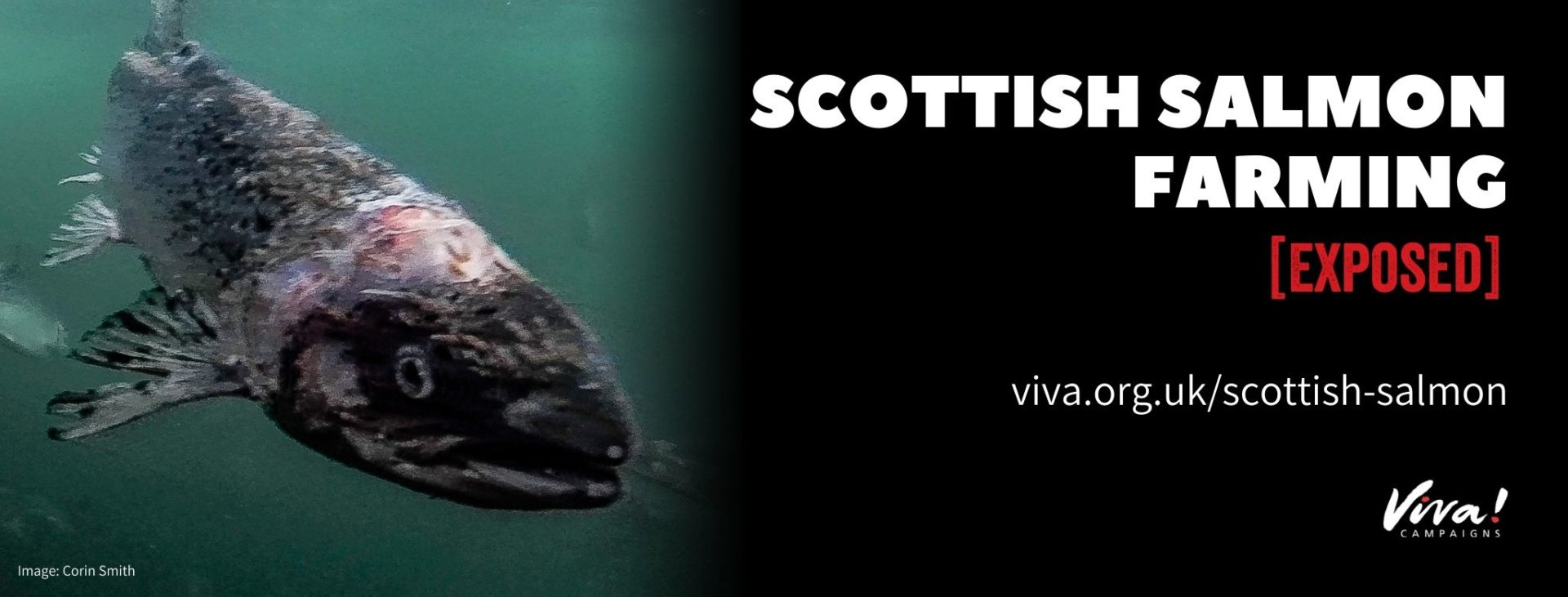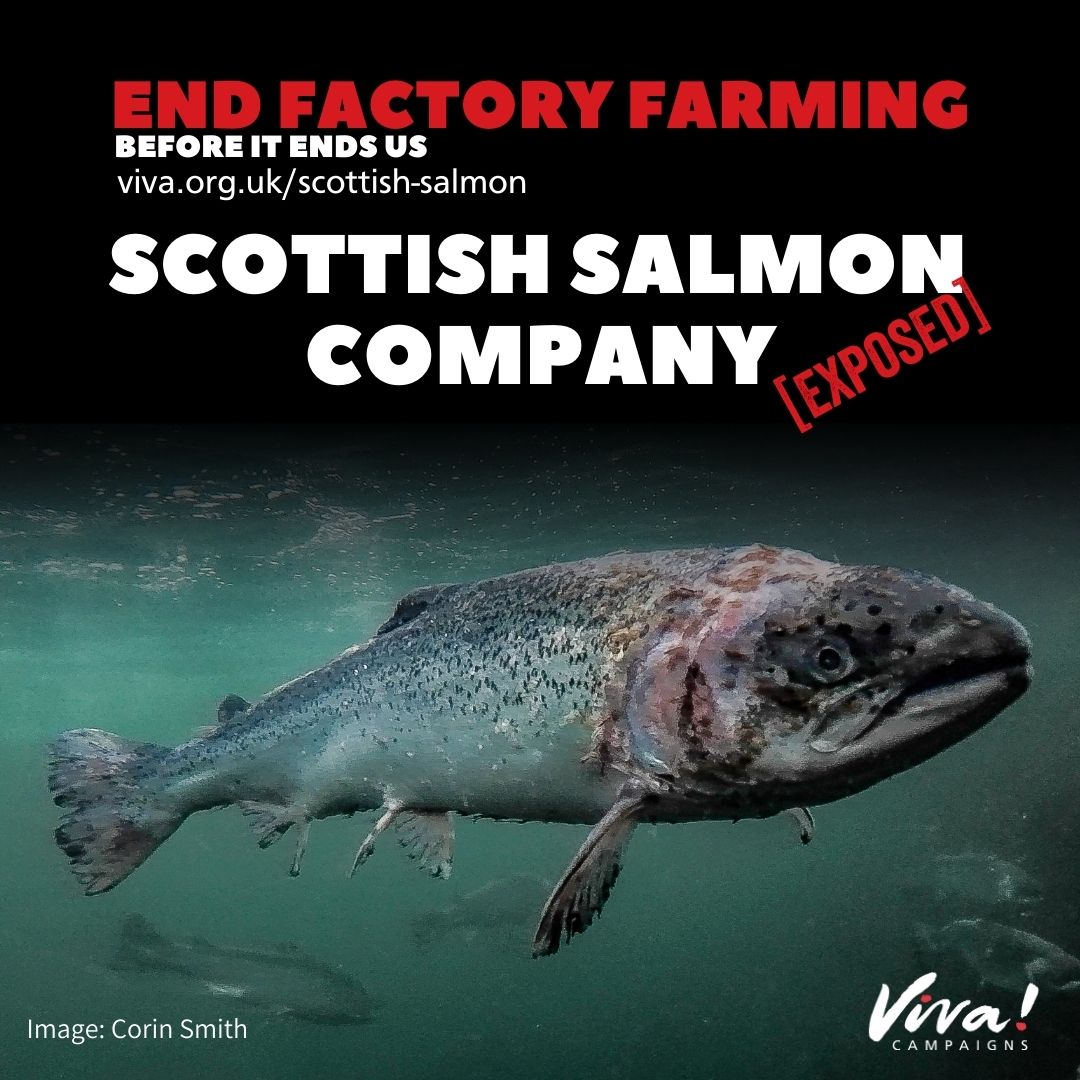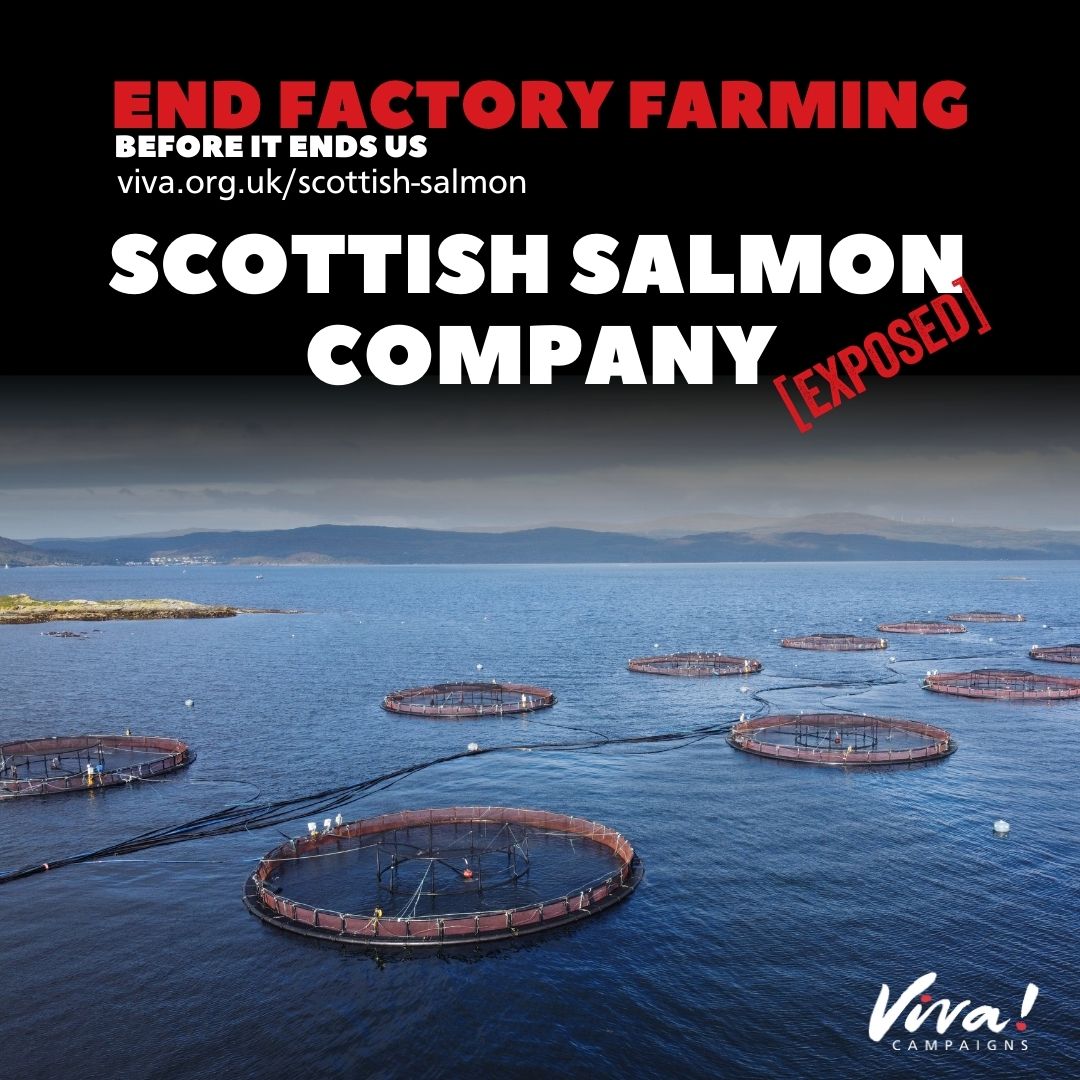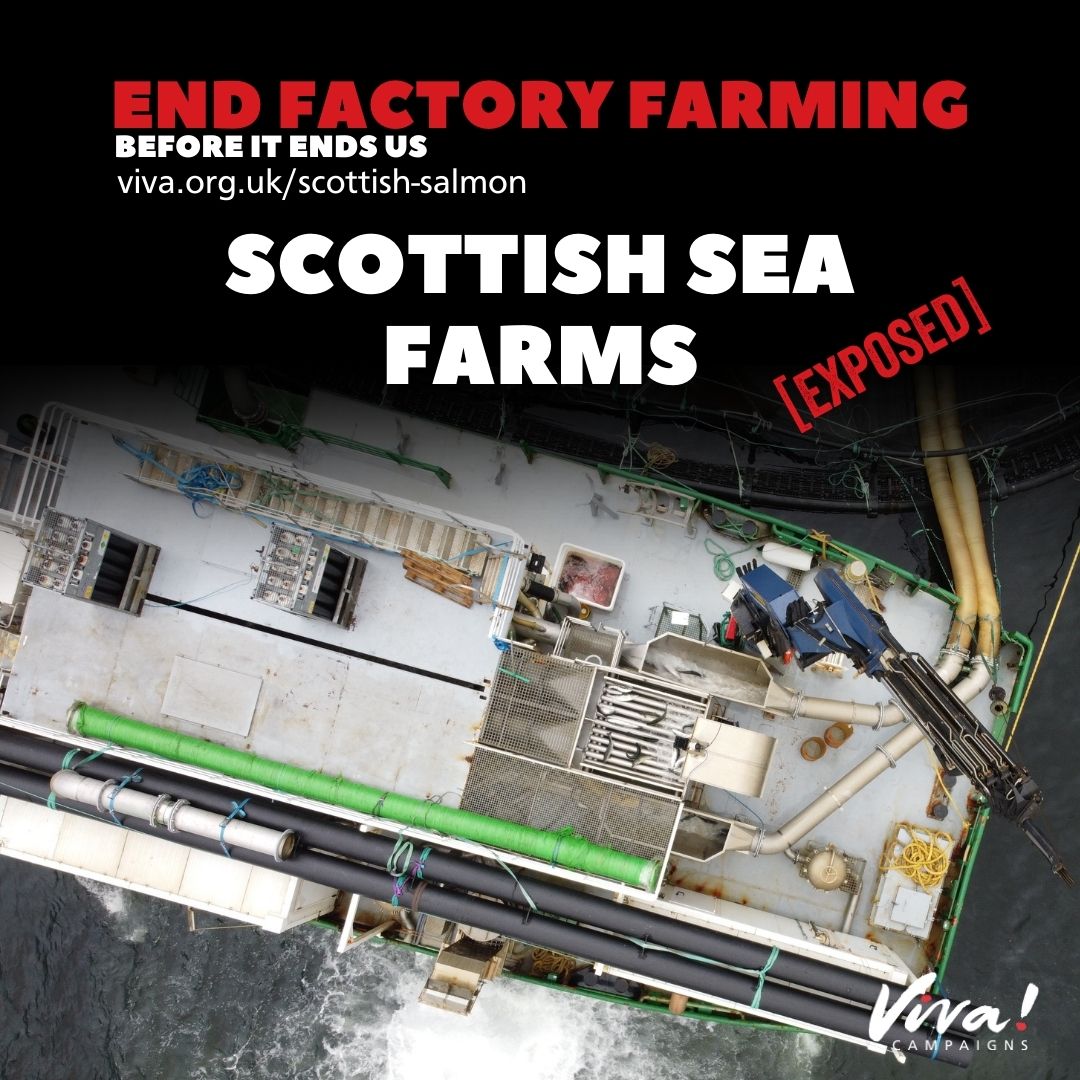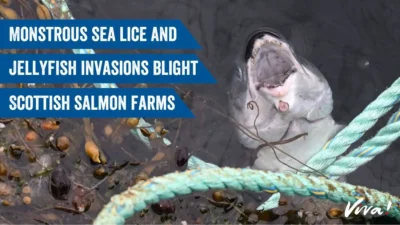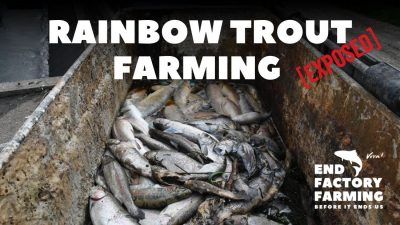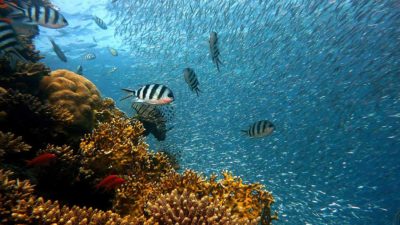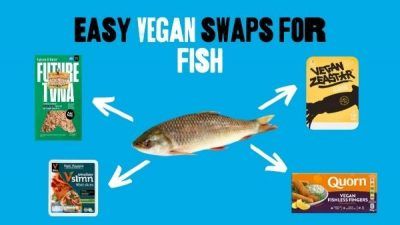Investigation: Scottish Salmon 2020
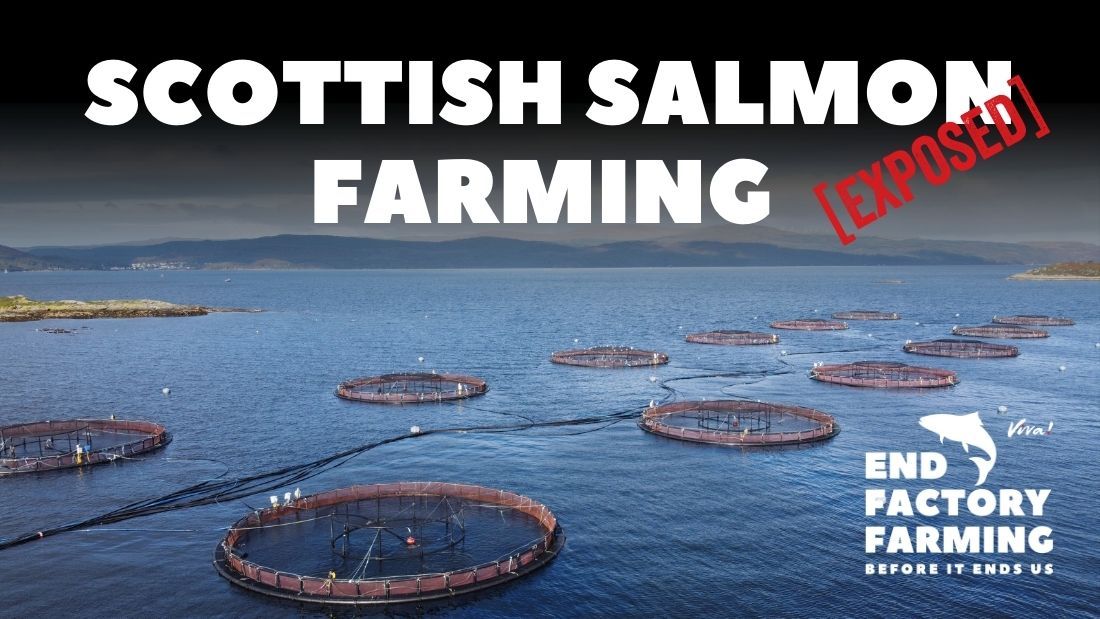
Alarming scenes captured at Scottish salmon farms supplying Co-op, Sainsbury’s, Lidl, Aldi, Morrisons and M&S reveal putrid conditions that lead to invasions of parasitic sea lice. Painful non-medicinal lice management systems that breach basic animal welfare standards on the treatment of farmed animals were also filmed – one of which was operating in a designated Special Area of Conservation and Marine Protected Area famous for its rare flame shell bed.
Around 70 per cent of Scottish salmon farms are RSPCA Assured, while the remainder conform to other supposedly ‘high welfare’ certification schemes such as Best Aquaculture Practices, Marin Trust, GGN Certified Aquaculture and GlobalG.A.P.
More images from the investigation can also be publicly viewed on Flickr.
Read the Daily Mirror exclusive
Promoted as a ‘sustainable’ solution to overfishing, modern aquaculture confines fish in fetid cages by their thousands, creating a breeding ground for disease and causing widespread suffering.

Whilst adult wild salmon are well adapted to coping with the odd sea louse – a parasite that naturally occurs in the sea – the intensification of salmon farming has led to fundamental changes in the density and occurrence of lice in coastal waters. Although one or two lice per salmon may not sound like a real threat, when you multiply that by hundreds of thousands within a sea cage, the consequences are catastrophic.
The lice reproduce rampantly, feeding on skin, mucus and blood, which produces white ‘death crowns’ of exposed flesh on the salmon. Clearly suffering, the infected fish are regularly seen jumping up to 30 centimetres in the air and skimming along the water surface with their tails in attempts to dislodge the bugs. Large numbers of these lice can be devastating, causing skin lesions, loss of scales, secondary infection and ultimately death.
As if that wasn’t bad enough, huge numbers of juvenile sea lice also escape to the local marine environment, causing significant damage to wild salmon and sea trout smolts, whose fragile skin is not yet adapted to coping with parasites on this level.
In response to the invasion of sea lice, the aquaculture industry breeds millions of lumpfish ‘cleaners’ that feed on sea lice, in futile endeavours to control the outbreaks. Other techniques include chemical washes or mechanical treatments such as hydrolicers and thermolicers.
Hydrolicers
During a hydrolice treatment, fish are drawn into a ‘washing machine’ type device through two lines by live fish pumps. Each system line includes a fish counter, two hydrolicer combi units, fish pumps, water separating units and a filtration system to ensure that all the lice can be removed from the water and destroyed.
As the salmon pass through the system, they are sprayed with freshwater jets to dislodge lice that are not adapted to non-seawater conditions. Eye damage, increased stress levels and death are all consequences of the process.
According to the Scottish Government, fish farms have reported killing 269,674 salmon in hydrolicers between 2016 and 2019. That’s an average of 67,418 a year.
Thermolicers
Like with hydrolicer treatments, salmon are herded and pumped up from the sea pen through a tube. Exiting the tubes the fish pass through a tank of warm water, before being ejecting back out into the opposite side of the sea cage. The water is heated up to 34 degrees, which can be 20 degrees above the seawater temperature. It takes around 25-30 seconds for the fish to pass through the entire ‘processing loop’.
Sea lice are sensitive to sudden changes in water temperature and so die and fall off once the salmon hit the heated water. They are then collected and destroyed.
Recent scientific research has found that salmon exposed to water temperatures above 28 degrees centigrade behaved as if they were in pain. Marine and veterinary researchers in Norway observed fish swimming faster, crashing into tank walls and shaking their heads.
According to the Scottish Government, fish farms have reported killing 177,601 salmon in thermolicers between 2016 and 2019. That’s an average of 44,400 a year.

“In my expert opinion and based upon scientific studies from other laboratories, [hydrolicers and thermolicers] contravene the FAWC five freedoms, the RSPCA (2018) welfare standards for farmed Atlantic salmon and the Animal Welfare Act (2006) resulting in harm and poor welfare and should not be employed within the Atlantic salmon farming industry.”
– Dr Lynne Sneddon (Senior Academic, University of Gothenburg)
Update your cover photo
Do you use social media? Use our graphics below to change your Facebook and Twitter cover images and help spread awareness.
Facebook:
Twitter:
Share our investigation graphics
Download one of the graphics below and share with the following text:
Putrid conditions and severe overcrowding on Scottish salmon farms lead to parasitic sea lice invasions that kill fish and destroy the surrounding environment. End Factory Farming Before It Ends Us.
👉 viva.org.uk/scottish-salmon
#EndFactoryFarming #EFF
Share our investigation video
Copy the link below into the status bar on your social media accounts or email to a friend.
Scottish Salmon Farming Exposed: https://youtu.be/AkU65RnxtR4
Share our End Factory Farming fish logo
Your voice counts!
Join us in calling on Prime Minister Boris Johnson to End Factory Farming Before It Ends Us.
End Factory Farming
Choose Vegan

The Daily Mirror [Exclusive]: ‘Putrid’ salmon farms infested with flesh-eating lice threaten wildlife in oceans

The London Economic: There’s something fishy about farmed Scottish Salmon that might turn your stomach

By becoming a monthly donor, you will automatically become a Viva! Supporter and receive a subscription to Viva! Life magazine and a supporter welcome pack.We have lots of other welcome goodies available to our supporters, such as our fantastic range of discounts in our Supporter Discount Scheme.
(£1+ per month)
(£3+ per month)
(£5+ per month)
(£200+ fixed cost)




